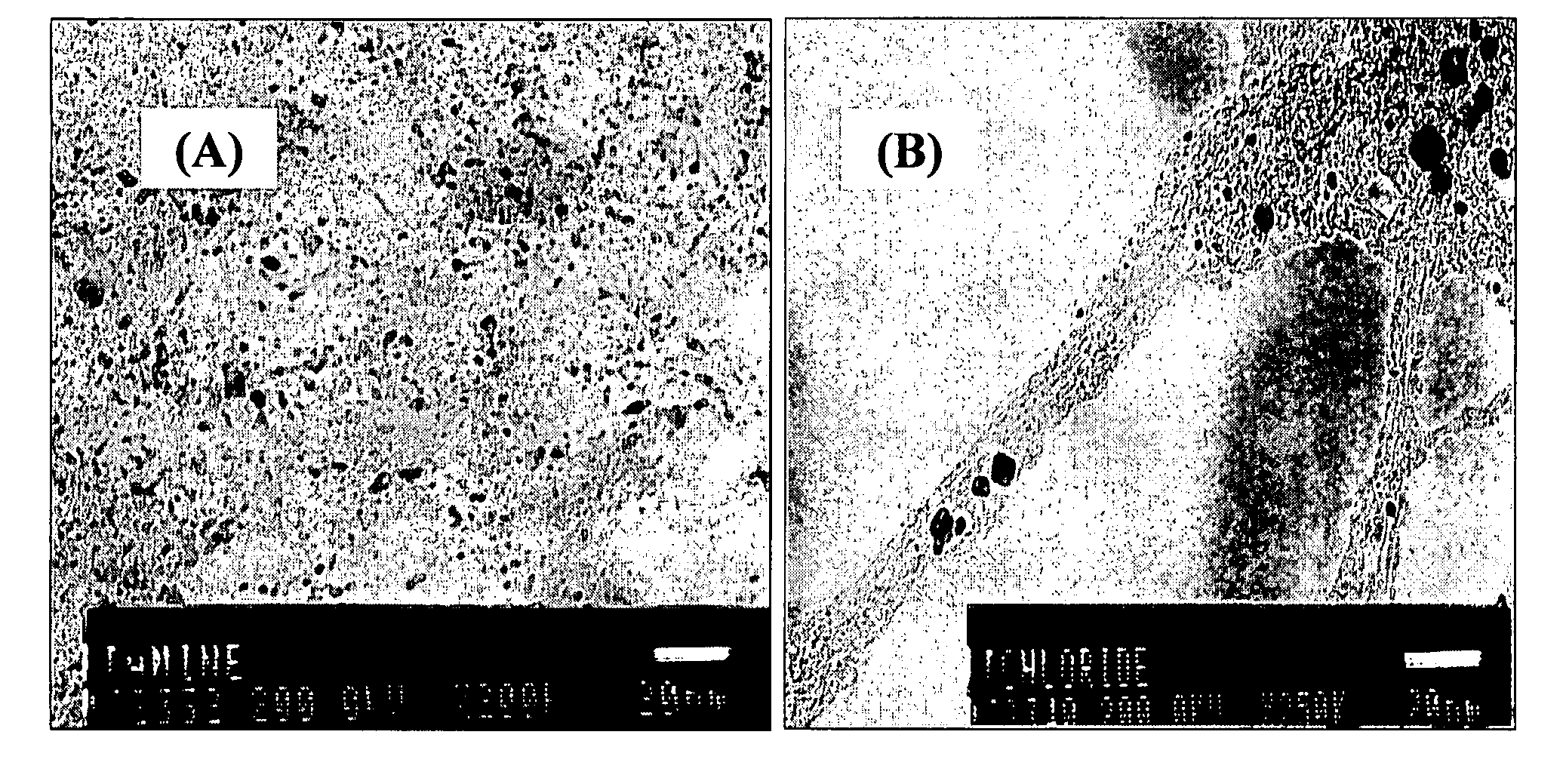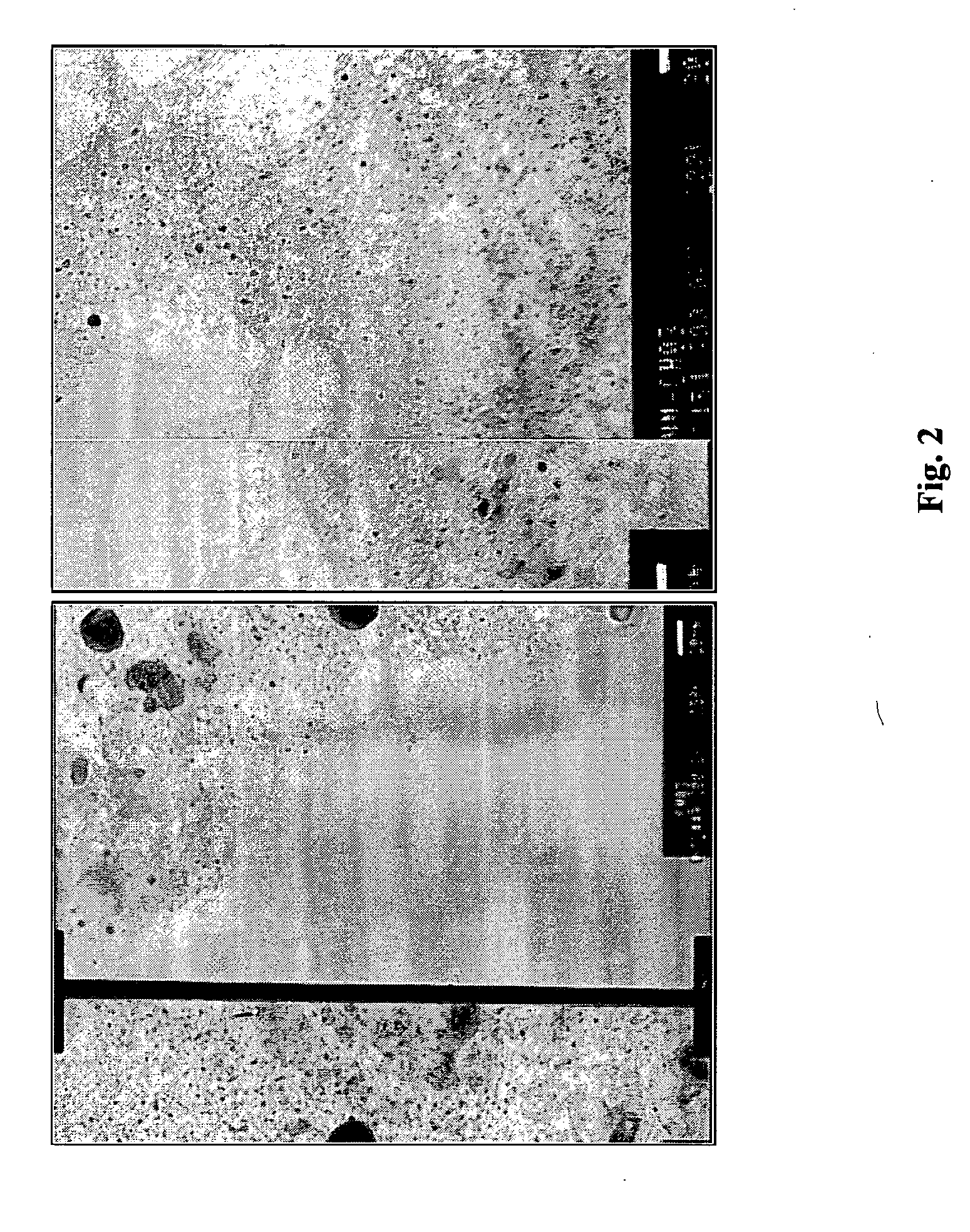Carbon nanotube pastes and methods of use
a carbon nanotube and paste technology, applied in the field of carbon nanotube pastes and methods of use, can solve the problems of incompatibility of swnts with most typical solvents, limited use high cost of swnts at this stage of production, etc., to achieve widespread use, reduce the effect of handling and use, and reduce the cost of swnts
- Summary
- Abstract
- Description
- Claims
- Application Information
AI Technical Summary
Problems solved by technology
Method used
Image
Examples
example 1
Method of Preparation of the Dispersable SWNT Paste in Aqueous Media
[0036] The SWNTs purified according to the method described above were recovered in a glass container while still wet and additional deionized water was added. Very high-energy horn-sonication (using a Fisher 550 Sonic Dismembrator) was then applied to the solution for a determined period of time. In this example, the sonication time was of 1 min., but similar results were obtained in a time range of from 10 seconds to 5 minutes. The optimum sonication time depends on the total amount of material being processed, and can be determined by observation of the viscosity of the slurry. The horn-sonicator is preferably at least 20 KHz of frequency and operates in a range of 60W to 600W of maximum energy. The combination of energetic sonication and warming up of the solution gives the suspension the consistency of a black paste (which might also be described as a cream or a slurry). The present method differs from previou...
example 2
Method of Preparation of the Dispersable SWNT Paste in Organic Media
[0037] The SWNTs purified according to the method described above were recovered in a glass container while still wet and washed by filtration with an organic solvent until the residual water was completely removed. The resulting SWNT-solvent paste was transferred to a glass container where additional organic solvent was added, providing a SWNT / solvent ratio within a 100:1-30:1 range. Energetic horn-sonication was applied following the procedure described above until a thick paste was formed. In this example, the nanotubes bundles are surrounded by organic solvent molecules instead of water, making this paste ready to re-disperse in any organic medium.
example 3
Method of Preparation of a Pt / SWNT Catalyst
[0038] The PZC (point of zero charge) of the nanotubes varies with the purification method. The changes in PZC can be explained taking into account that proton adsorption occurs on the nanotube surface when the pH of the surrounding medium is below th PZC. By contrast, release of protons from the surface occurs when the pH is higher than the PZC. By contrast, release of protons from the surface occurs when the pH is higher than the PZC. If the concentration of OH− is further increased, negative charges are generated on the surface. Depending upon the electrical charge of metal precursor ion of interest, the pH is adjusted to generate charges of opposite sign on the nanotubes surface. Then, an aqueous solution of metal precursor is added to the gel. Because of the electrostatic attraction between the charged nanotubes and the precursor ions, the metal rapidly adsorbs onto the nanotube surface. The mixture is then sonicated to open up bundle...
PUM
| Property | Measurement | Unit |
|---|---|---|
| viscosity | aaaaa | aaaaa |
| viscosity | aaaaa | aaaaa |
| diameter | aaaaa | aaaaa |
Abstract
Description
Claims
Application Information
 Login to View More
Login to View More - R&D
- Intellectual Property
- Life Sciences
- Materials
- Tech Scout
- Unparalleled Data Quality
- Higher Quality Content
- 60% Fewer Hallucinations
Browse by: Latest US Patents, China's latest patents, Technical Efficacy Thesaurus, Application Domain, Technology Topic, Popular Technical Reports.
© 2025 PatSnap. All rights reserved.Legal|Privacy policy|Modern Slavery Act Transparency Statement|Sitemap|About US| Contact US: help@patsnap.com



